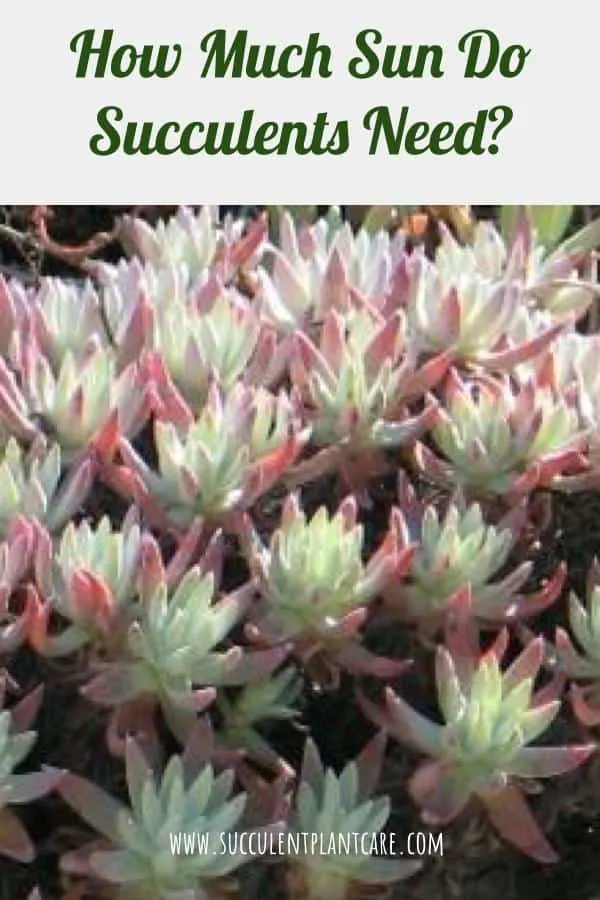Growing succulents outdoors– Sunlight, Sunburn, Heatwaves and more
When we think of cacti and succulents, we usually think of desert plants that require intense heat and bright sun. However, contrary to this belief, most succulents do not thrive very well under blasting full sun exposure and extremely hot temperatures.
This is because most succulents are from semi-desert environments; these are places that have similar characteristics as real deserts but receive more water or precipitation.

Also, most succulents in their native habitats grow in low lying areas where they are shaded by other taller plants. In nature, they also grow in crevices where they receive protection from the sun, or on hilltops where they are shaded by rocks or boulders.
Succulents love the sun, most need at least 4-6 hours of sun a day to be happy. However it is important to understand what age, type and size of succulent you have. Be sure to slowly acclimate them to direct sun to keep them alive.
Read on to understand what to do and not to do to make sure you give your succulent the appropriate amount of sunlight to avoid killing it.
How many hours of sunlight do succulents need?
In general, succulents need at least 4-6 hours of sunlight a day to keep them happy. They love being in bright and sunny locations. Succulents that do not receive enough sunlight will exhibit problems such as elongation or etiolation, where the plants stretch to seek more light. This process produces weak stems and poor growth. Succulents that do not receive enough light will lose their vibrant pigmentation and will become pale or revert to a dull green color. Plants that receive adequate sunlight will demonstrate their true beauty by showcasing their full range of vibrant colors.
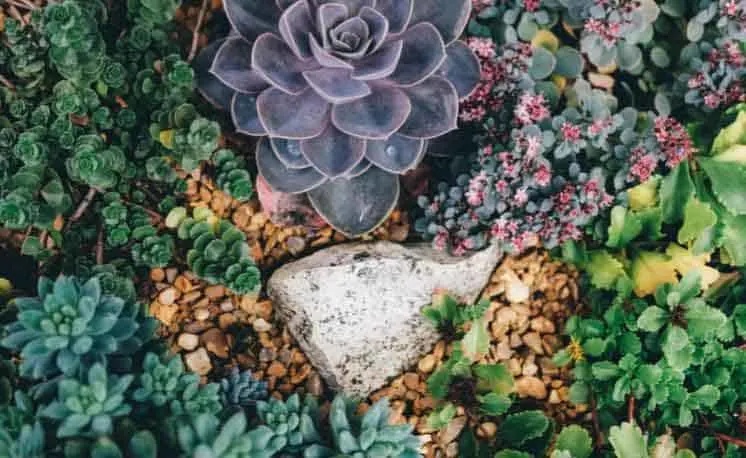
Do Succulents Need Direct Sunlight or Full Sun?
Succulents by nature do better with a lot of sun exposure, but they do need protection from direct sunlight or intense heat. Too much intense sunlight can cause damage to the plants. Sunburn damage on a plant can lead to permanent scarring or worse, plants can literally fry to death when left outside in full sun without protection. To prevent sunburn or sun damage, it is better to slowly condition to the more intense sunlight prior to full sun exposure. You do this by giving it partial shade in the beginning and slowly giving it more and more sun exposure until it is fully acclimatized to the sun and heat. You can start with morning sun which is less intense and better tolerated by most succulents and work your way up to the more intense afternoon sun. You can also place the plant under a shade or taller plants when first exposing the plant to direct sun. Increase sun exposure gradually to prevent shocking the plant and also damaging its foliage.
Shade-loving species, as well as very small plants or newly propagated plants, are more susceptible to sun damage. Plants that are red, gray, blue or covered densely with spines fare better under direct sunlight. Sun-hardy species that have been accustomed to growing indoors are also susceptible to sunburn or sun damage when first moved outdoors so it is better to do so slowly to get the plant accustomed to the more intense heat. Baby plants or newly propagated plants will not do well under direct sun. You need to wait for them to become more mature plants until you can leave them unprotected.
Different parts of your outdoor space get hit by the sun’s rays at different times of the day. It may take some trial and error to see which location will suit your succulents the best. Some may like morning sun better, others will do well with the blasting afternoon heat, while others will fare better in partly shaded areas.
Can Succulents Get Too Much Sun?
Too much sun, especially intense sun, can cause sunburn and sun damage. Sunburn can happen quickly in less than an hour outside, especially during a particularly hot day or during a heat wave. Sunburn can also happen gradually. Brown spots on the leaves of the plant are usually the first signs of sunburn. When recognized early, sun stress in the early stages can be easily remedied to avoid further damage to the plants. Simply move the plant to a shadier location or place next to taller plants for protection from the sun as soon as you notice the plant getting sunburned. When left unattended under the sweltering heat, some succulents will toughen up and survive, while others will fry to a crisp depending on the type of plant you have. If you don’t want to take any chances, provide sun protection for your plants during intense heat. Click on my resource page for sun protection recommendations.
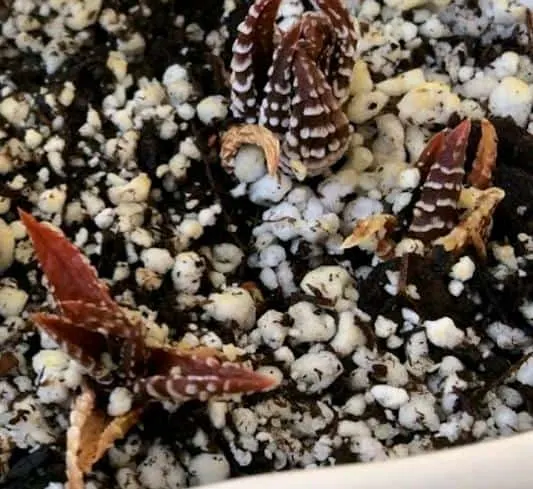
Here is a picture of baby plants that have shriveled and discolored due to too much sun exposure
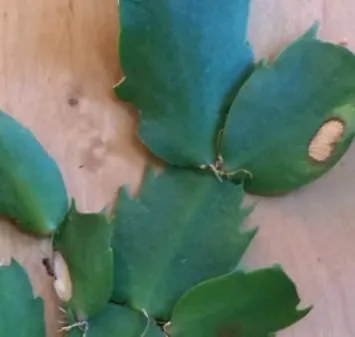
Sunburned spots on my Christmas cactus leaves
How to Keep Your Succulents Alive During Prolonged Heatwaves
With climate change going on, it seems that weather extremes are becoming more of a norm these days. If you have never experienced a heat wave, you must live in one of the coldest regions of the world. Heat waves are prolonged periods of extremely high temperatures lasting for days or weeks without relief. Heat waves in the summer time are especially challenging to plants that love humidity but also to succulents and cacti. Extreme heat for a prolonged period of time can be damaging to your outdoor plants if left unattended. Some plants do bounce back, but others may not recover from the damage and stress. What can you do during a heat wave to help your outdoor plants?
Here are some do’s and don’ts to help ensure survival during a heatwave:
What to Do during a heatwave
- Provide shade
The best thing you can do during a heat wave is to prepare ahead of time. If you know there is a heat wave coming, it is best to find shelter for your smaller, more fragile succulent plants. If possible, you can move them in shadier spots. Small container plants that can be moved will do better if moved temporarily to a less sunny location, or even indoors. I like to use taller, bigger plants as shade for my little plants. Hardier, more mature plants that are acclimated to the outdoor heat may do just fine, but still keep a watchful eye on them. If you have planted your succulents in ground or in beds or containers that are impossible to move, covering your plants with shade cloth or muslin from the afternoon heat during a heatwave will also do the trick.
- Promote humidity
Succulents do not like to sit in water or be overwatered, but under extreme heat conditions, it is necessary to check for adequate moisture on your plants. Not watering your succulents for prolonged periods of time during a heat wave can be as detrimental to these plants as overwatering. Hardier and more mature plants may survive these extreme conditions if left unattended, but smaller or more fragile ones will not. Check your soil for moisture. If you have not watered your outdoor succulent plants in over a week, touch the soil and go a few inches down. The soil will most likely be bone dry under extreme heat. It is time to water, and water deeply until water seeps out from the bottom of the pot. My rule of thumb is to water outdoor succulents about every 6-7 days during a heat wave.
What NOT To Do during a heat wave
Do not do anything drastic to your plants during a heat wave. Adding more unnecessary stress to the plants during an already stressful period is not practicing the best plant care for your plants.
- Do not re-pot
If you are itching to repot your plant and finally have the time to do so, repotting during a heat wave is not the best idea. Repotting any plant, even a mature established one, introduces stress to the plant, and repotting during a heatwave adds even more stress to the plant. Wait until after the heatwave to repot to give your plant the best chance at survival.
- Do not propagate
It is not the best time to propagate during a heatwave. You want to propagate your plants during a milder, less hostile season. First of, when propagating from an existing plant, you want to choose a healthy plant to ensure the most success. Propagating from a stressed-out plant that is focused on surviving these harsh conditions may not give you the optimal result you are looking for. Pruning and cutting your plant for propagation also introduce more stress to the plant, as it needs to focus on healing and regrowing.
- Do not fertilize
Fertilizing your succulents can do wonders for their growth. However, you need to find the right time and season to fertilize. Preferably, you want to fertilize or feed your plants when they are actively growing. During a heatwave, the plant’s main focus is to survive. It is not in growing mode and introducing extra nutrients into the soil may cause more damage than good.
Here are my recommendations for sun protection to help prevent sun damage to your succulents during an intense heatwave.
Can Succulents Survive Without Sunlight?
Due to succulents’ hardy nature, they can survive indefinitely without sunlight or with very little light. But they will not thrive under these conditions and will soon exhibit signs that tell you they are in trouble, such as elongating or stretching for more light and poor, stunted growth. When given too much water and very little light, succulents will succumb to root rot which is detrimental to the plant. If not corrected right away, the plant will rot from the root up and eventually die. When root rot sets in, it is very hard to save the plant. For more on this topic, visit my post on “How To Save an Overwatered Succulent“.
Can Succulents Grow in The Shade?
Most succulents fare really well when placed in very bright but partially shaded locations. These are areas that receive plenty of bright light but are protected from the very intense afternoon heat. Most succulents do not do very well when placed in dim, shaded areas that do not receive bright light. There are a few succulents that are adapted to grow in dim or shaded areas but most succulents do not thrive in such growing conditions. Here are succulents that can do well in low light or in the shade: “Top 12 Low-light Succulents and Cacti“. You may also find this post about growing succulents in the shade helpful: “How To Grow Succulents in The Office or In Low Light“.
Know Your Hardiness Zone
It helps to know which planting zone your area falls under to figure out whether the plants you are planning to have are suitable for your area’s climate. You can look up your area’s planting zone to find out which plants will grow well and thrive in your local climate. The USDA hardiness zone finder is a very useful tool that can help you figure out where your area falls under. When you buy your plant from a local plant nursery, the plant often comes with information about its hardiness zone. Likewise, your local garden center will mostly carry plants that are suitable for your local climate.
How Much Rain Do You Get?
It is also important to take into consideration how much rain you get and the humidity in your area when growing your succulents outdoors. While most succulents love rainwater, too much rain and humidity can pose a problem for succulents. If it rains year round in your area and you do not receive adequate sunlight, your succulents will not be happy for too long. It is paramount to provide a fast, well-draining soil under these circumstances, and also to provide some shade or protection from the year-round rain. You may even consider growing your succulents indoors where you can provide a more controlled environment for your plants.
Best succulents for full sun
What are some of the best succulents for full sun? Certain species of succulents thrive in full sun more than others.
Aeonium Arboreum (Tree Anemone or Desert Pinwheel Rose)
Aeonium arboreums are most commonly known for their striking rosettes with waxy leaves growing out of their stems. Stems can be long and branched-out or short and stubby. A unique feature of aeoniums is the way they grow and multiply. They reproduce and form offsets from a single flowerhead. New offsets emerge from a single flowerhead which then dies after producing several offsets. Aeoniums come in a number of varieties, colors, shapes and sizes. They grow best in full sun to partial shade. Aeoniums go dormant in really hot and dry weather conditions. Their leaves will curl and drop to prevent excessive water loss. Their true growth period is during winter or spring. Aeoniums need some moisture, but do not like to be overwatered. They can be grown in ground or in containers. They are fast growing, hardy plants that are easy to propagate from cuttings.
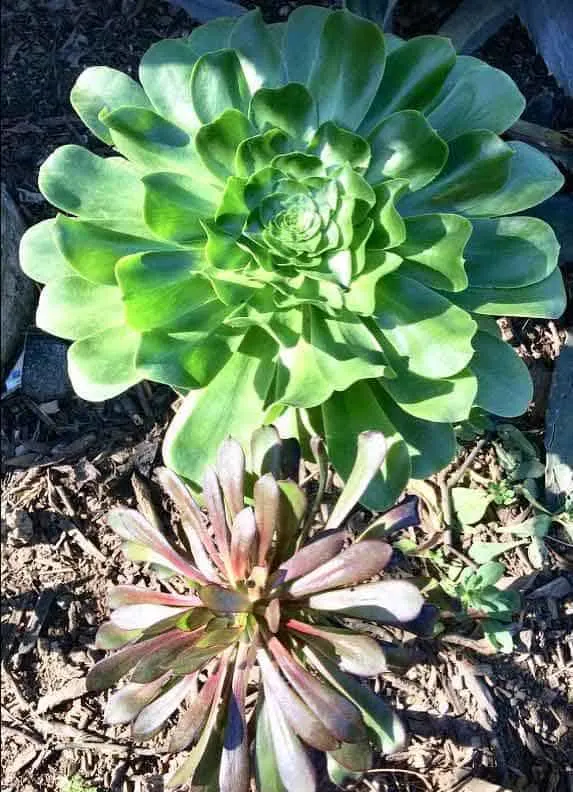
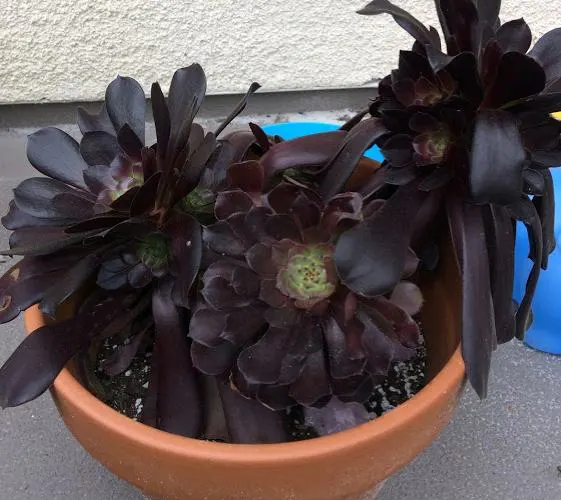
My own Aeonium Arboreum or Zwartkop (Black Rose)
Opuntia (Prickly Pear Cactus)
If you are looking for a plant that will revel in the sun’s rays, opuntia or prickly pear cactus is a great choice. They can be easily identified from other cacti species by their round, flattened joints called pads. Their fleshy pads grow in segments or columns. Their unique shape and large showy flowers make them an ideal choice for your garden or landscape. These plants have long been cultivated in Mexico as a food source for their edible fruits and as natural sweeteners. These plants need to be handled with caution due to their sharp spines. They can also be grown in containers to help control their growth.
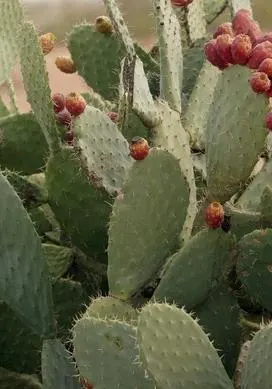
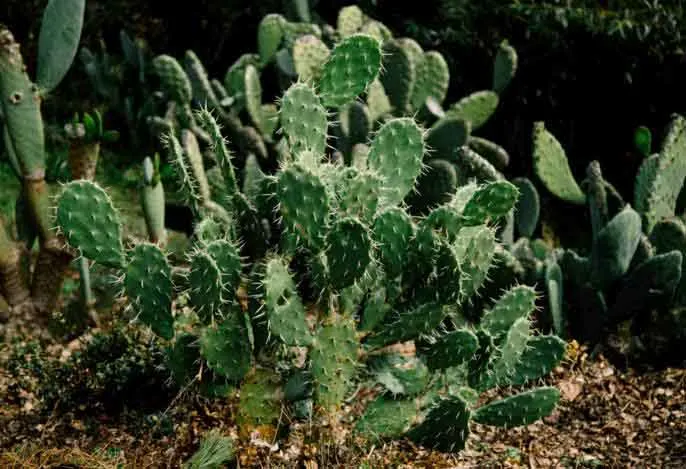
Euphorbia Tirucalli (Firestick Plants, Pencil Tree)
Native to Africa, Euphorbia Tiruacalli have small and slender leaves with cylindrical branches. Their color ranges from green to orange-red and intensify during colder winter months. These plants love full sun, which help to give them their distinct coloring. These are hardy plants that require very little care once established. They do not like extended periods of heatwaves and need to be checked for moisture. They can be cultivated both in ground or in containers and are not picky about the type of soil used.
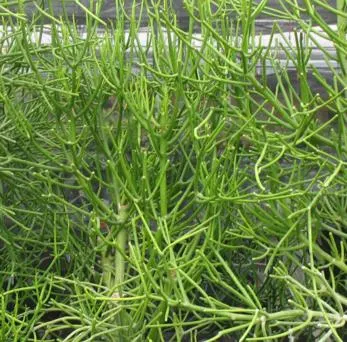
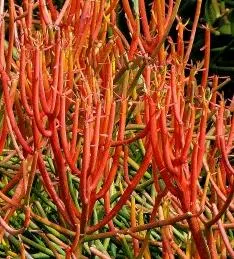
Agave
Agave is a large genus of succulents forming rosette shapes. They thrive in sunny locations, light shade and full sun. Agave species vary widely, some are dwarf species and others are huge plants capable of growing up to 10 feet tall. They can be cultivated in ground making for an attractive and interesting landscape. They can also be grown in pots or containers. Some agave plants are more cold resistant than others, depending on the region where they are from. Most agave plant will tolerate intense sun and heat and are very hardy plants.
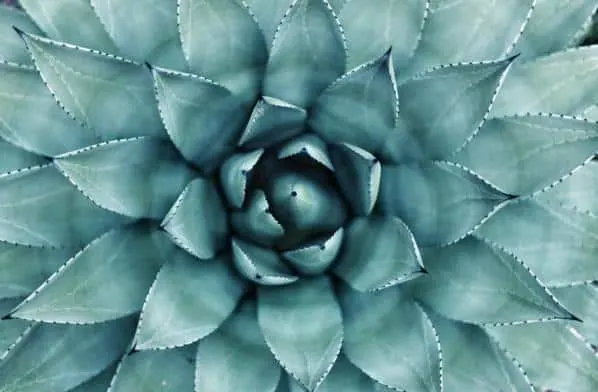
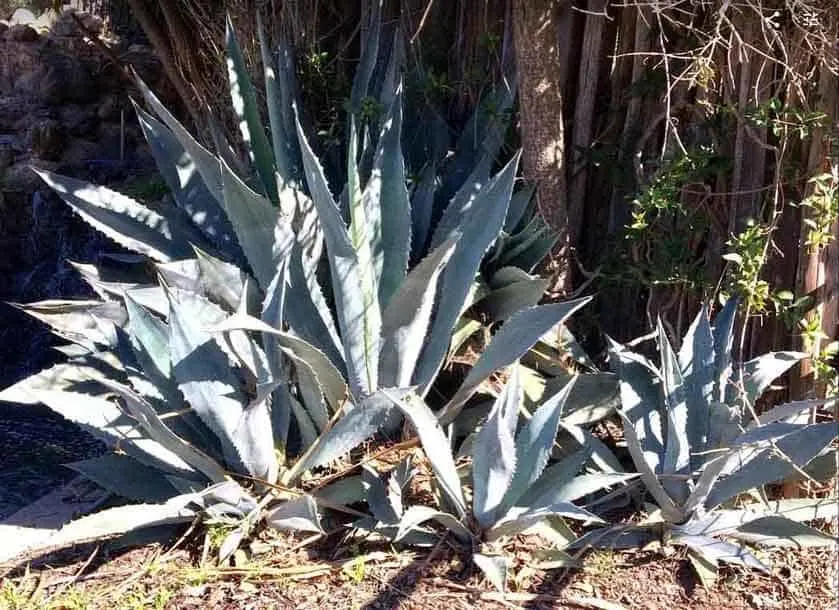
Senecio Mandraliscae (Blue Chalk Sticks)
These are small, evergreen succulents that branch and spread from the base, providing for ideal groundcover or shrub for your landscape. Their lovely blue-green, silvery hue make them an attractive choice for your garden or as container plants. Their fleshy leaves are thin and finger-like in appearance. They can also serve as attractive trailing plants in containers. These plants like full sun to light shade. If growing indoors as container plants, they enjoy spending the summer outdoors in the sun. They may produce small white and yellow flowers. They need a well-draining soil.
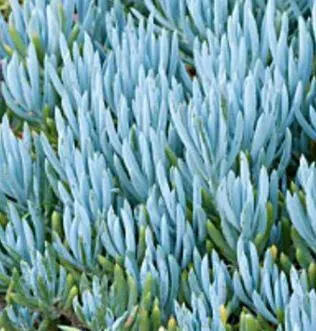
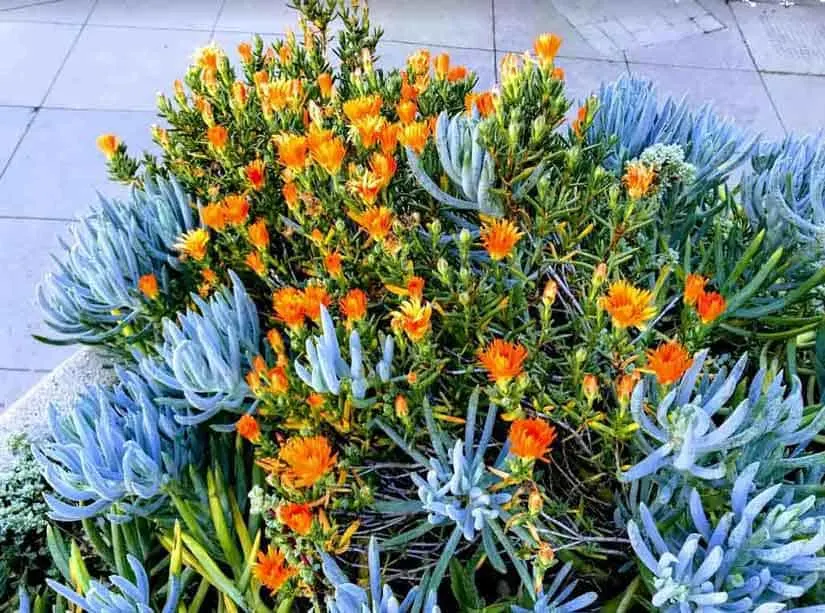
Advantages of growing succulents outdoors
Growing succulents outdoors can be advantageous to your plants. Depending on the lighting, humidity, and temperature in your home, succulents almost always fare better when left outside or given some outdoor time even for short periods of time. Some advantages of growing them outdoors are:
- Lots of natural light
When growing outdoors, the chances of your plants receiving enough sunlight is greater. Depending on the lighting situation inside your home, some environments may not be enough to provide adequate sunlight for your plants. Succulents need plenty of sunlight to thrive, at least 4-6 hours of sunlight a day or more. When left outdoors, you are exposing your plants to the sun’s rays all day and you are almost guaranteed they will receive the sunlight that they need in a day.
- Rain Water
If you observe your succulent plants after a good rain, you will notice that they look healthier, brighter and even happier. Rainwater actually has beneficial effects on your plants. They provide necessary nutrients and minerals for your plants while flushing out and getting rid of harmful build-up from tap water. Rainwater also helps clean the leaves of the plants by washing away dust and other particles that may prevent photosynthesis from taking place. What I also like to do when rain is expected is I move my container plants where rain can get to them and they can get a good soaking. That way they get the benefits of rainwater. It is not a bad idea to collect rainwater and reserve them for watering your plants later on and for watering your indoor plants.
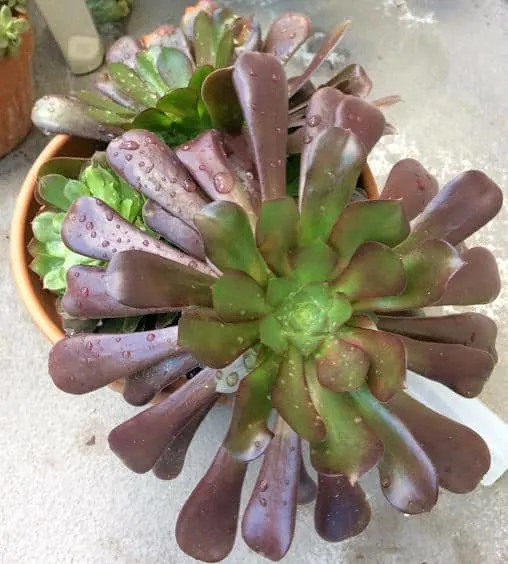
Happy aeoniums looking plump and vibrant after the rain
One of my biggest surprises was the effect of rainwater on my cactus plant. I fretted over this cactus plant throughout the cold, rainy season last year not knowing if it will survive all the moisture being rained down on it. After the rains, this plant doubled in size last year and grew long and plump. See the indentation where it stretched and grew. I have since moved this cactus plant in its own pot as you see here. That way it is easier to move and transport as needed.
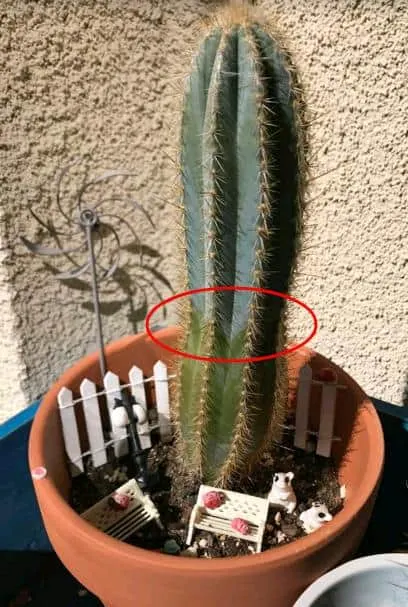
- Exposed to the natural elements
Plants need fresh air to thrive. They need oxygen for photosynthesis and to breathe. Oxygen helps plant grow. When left indoors overtime, plants can be depleted of oxygen from fresh air and toxic air can build up. Indoor plants can also accumulate dusts on their leaves, preventing the plants from breathing properly and blocking the much needed sunlight from touching the surface of the leaves. Keeping the leaves of the plants clean and free of dirt will help the plants grow better. Being outdoors also exposes plants to pollinators such as bees and birds, which are critical to their survival in the wild.
- Protected from pets and little children (and vice versa)
Keeping your plants outdoors can spare you the trouble of keeping your pets and little kids off your plants. Pets and little kids are naturally curious and they can harm your precious plants by jumping on them, trampling them, plucking their leaves, knocking the pots over, etc. My little daughter went through a short phase of plucking the leaves off my plants. Thankfully, she quickly learned this was a big no-no and had dropped the habit.
Not only that, but some succulent plants are harmful to pets and humans when ingested. Some succulents secrete substances that are harmful or irritating to pets and humans alike. Keeping your succulents outdoors can save you the trouble of worrying about your beloved pets being harmed from ingesting or playing with your plants. To learn more about succulent plants that are harmful to pets, visit my post on “9 Succulent Plants Toxic To Cats, Dogs or Pets“.
Growing succulents outdoors has many potential benefits, but is it right for everyone? When leaving your plants outdoors, it is also good to know that you are potentially introducing your plants to insects, pests, and animals that can do damage to your plants or spread diseases.
I have personally grown my succulents both indoors and out. But because of my local climate and indoor lighting conditions, my succulents do better outside. Due to succulents’ amazing qualities and resilient nature, they can grow and thrive in different environments which is part of their appeal and why we love them so much.
Wondering where you can purchase succulents online? Check out my Resource Page for recommendations.
Pin this now to save for later or share with others!
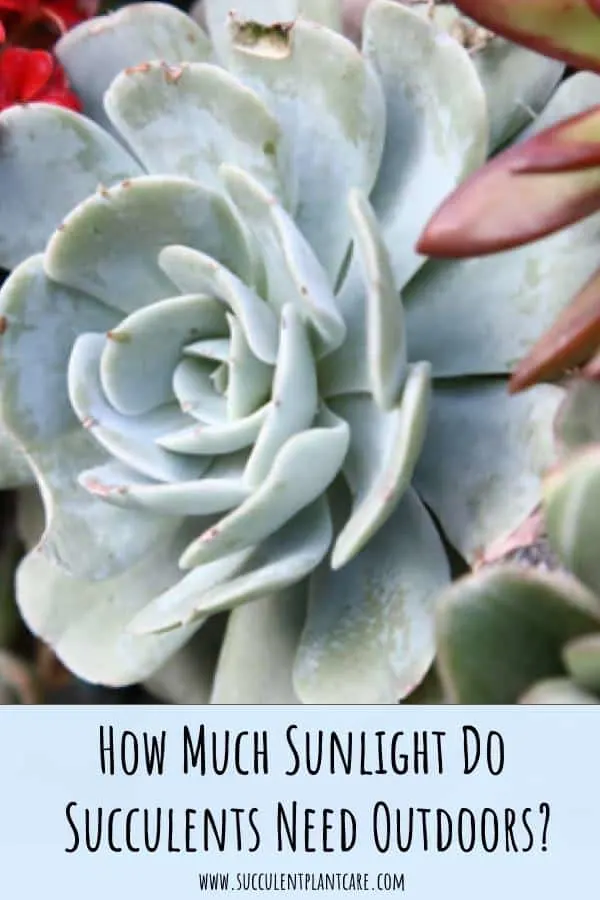
Photo by Robin Sommer on Unsplash
